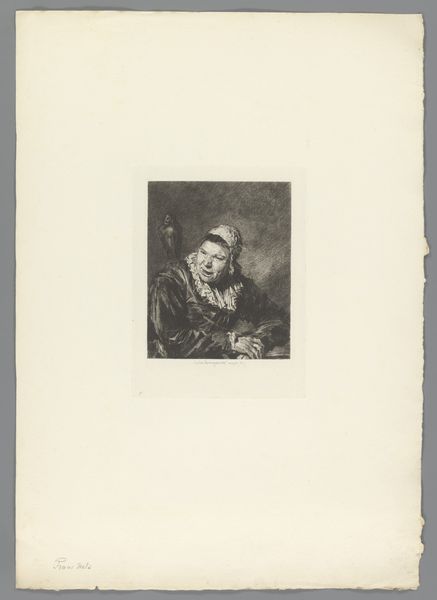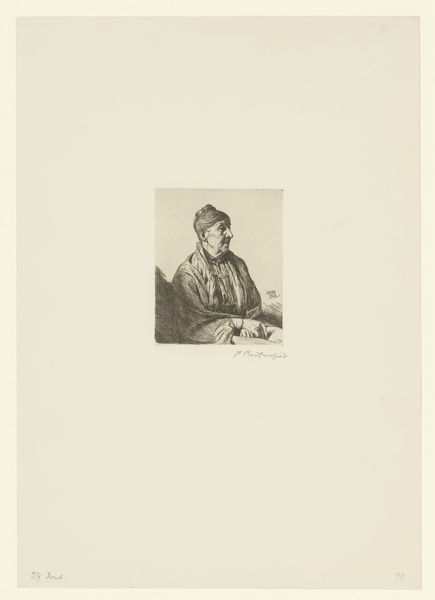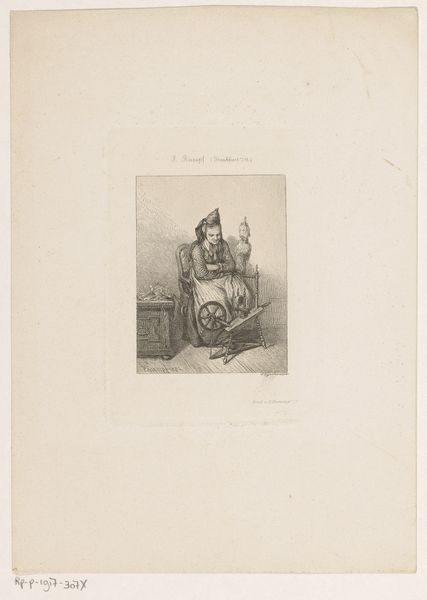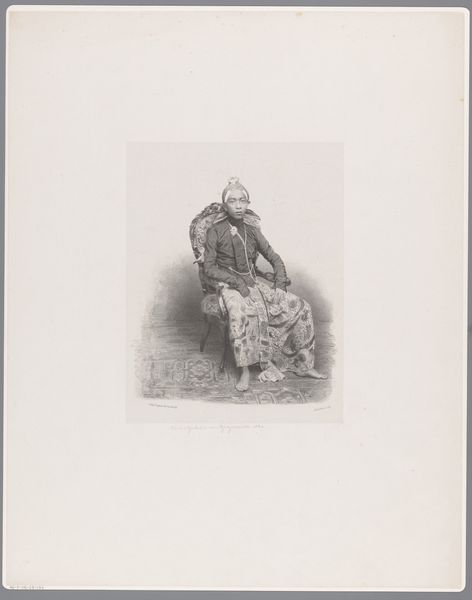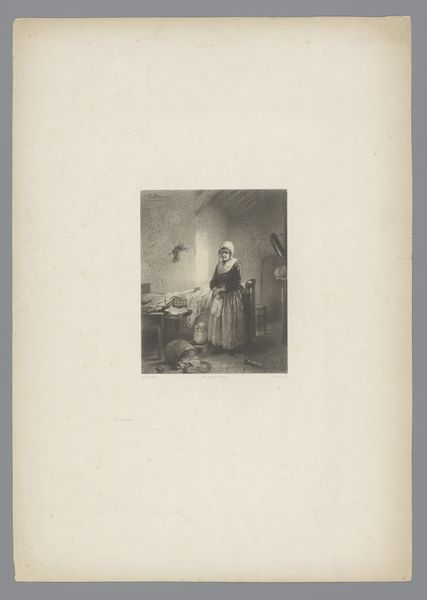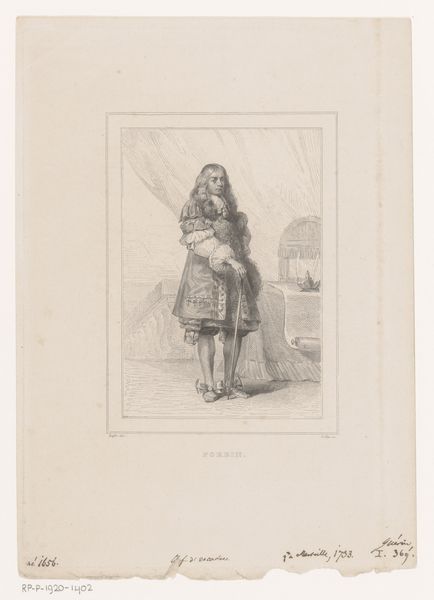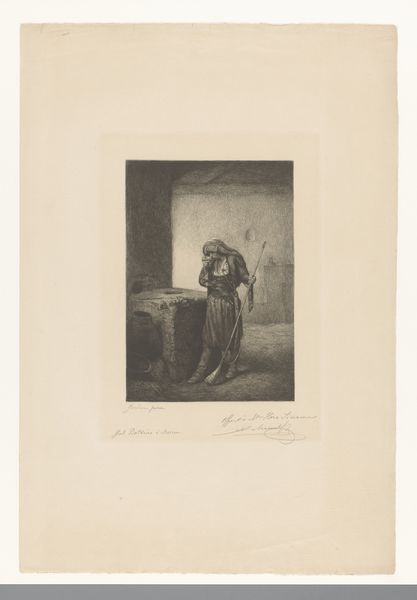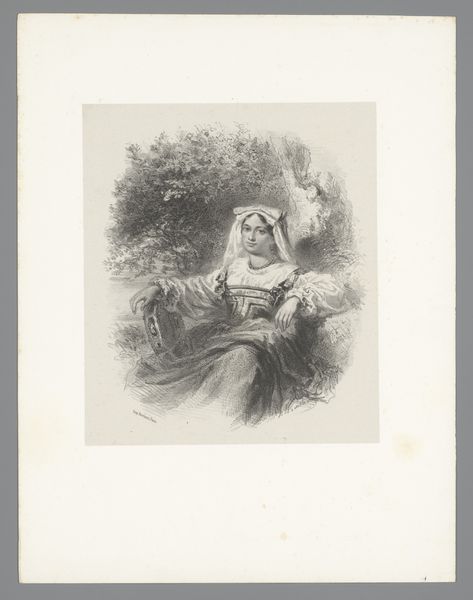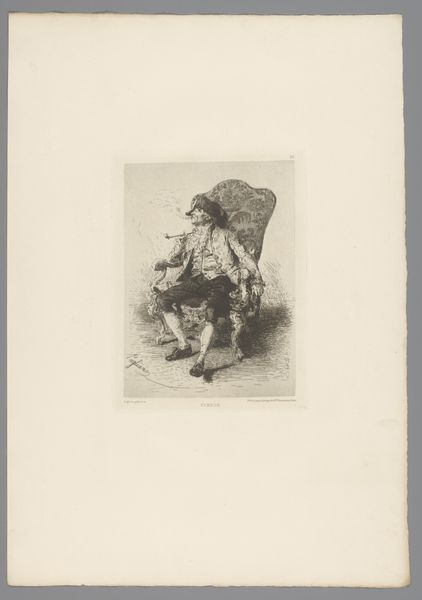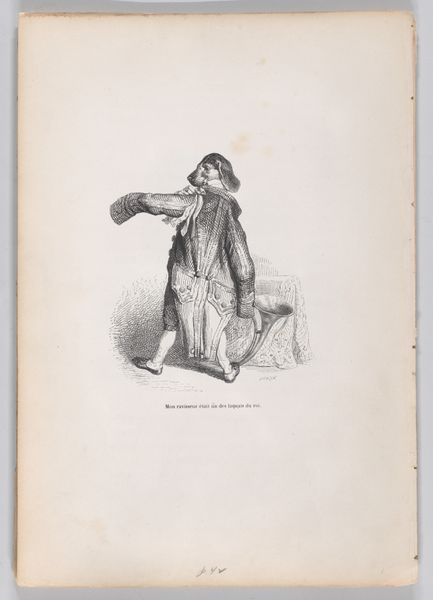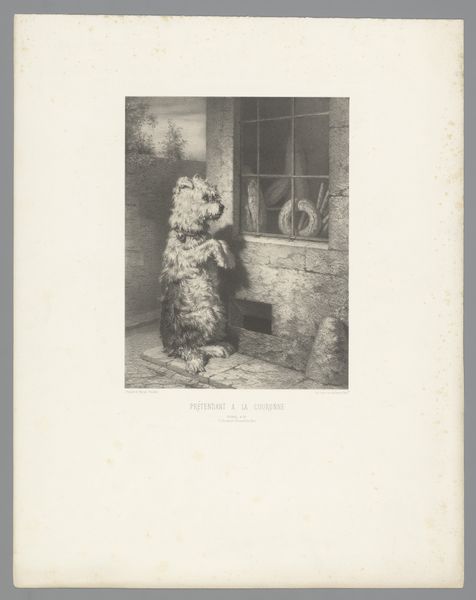
print, etching
#
portrait
#
negative space
#
dutch-golden-age
# print
#
etching
#
genre-painting
#
realism
Dimensions: height 171 mm, width 142 mm
Copyright: Rijks Museum: Open Domain
Curator: This etching, entitled "Hille Bobbe," was created in 1869 by Léopold Flameng. It is, in fact, a reproduction after the original painting by Frans Hals. Editor: It’s arresting, isn’t it? The composition has so much stark contrast—almost harsh. The woman's grimace is rather unsettling, yet captivating. The owl perched on her shoulder definitely adds a layer of the uncanny. Curator: It's true; her raucous expression jumps right out at you! We should remember that Hals's original portrayal wasn't merely an objective portrait. Rather, “Hille Bobbe" was actually a real person, known as a boisterous, local character from Haarlem taverns. Flameng's print captures that reputation through the quick lines and dynamic composition. She existed at the margins. Editor: Yes, the owl. That's what brings me back. Historically, owls are ambiguous creatures in the bestiaries. Depending on where you look, they are aligned with wisdom and sight or darkness and evil. Here, perched almost conspiratorially on her shoulder, the owl becomes a symbol—perhaps of her ostracized wisdom or of her affiliation with social darkness. Curator: You know, there's also the context of gendered marginalization. Hals's painting and Flameng's subsequent print circulated during periods of distinct societal anxieties around female assertiveness and deviance from domestic ideals. Hille Bobbe, as represented here, became something of an emblem for transgressive womanhood, for better or worse. She was the subject of multiple debates about class and womanhood! Editor: Fascinating! So, in some respects, she became a mirror for cultural anxieties. I see how the symbolic reading of this etching becomes so multilayered. The laughter, the owl, the seemingly carefree abandonment...all can signify varying societal disruptions. Curator: Precisely. And Flameng's reproduction extends the lifespan and reach of such meanings across decades, engaging new audiences within new socio-political moments. The print as a democratic art form reinforces her significance in public cultural memory. Editor: Thinking about it, what I initially read as 'harshness' can be reframed as unflinching commentary. Thanks to that owl! Curator: Exactly; this image reminds us that public portrayals often intertwine personal lives with political contexts and artistic license.
Comments
No comments
Be the first to comment and join the conversation on the ultimate creative platform.

